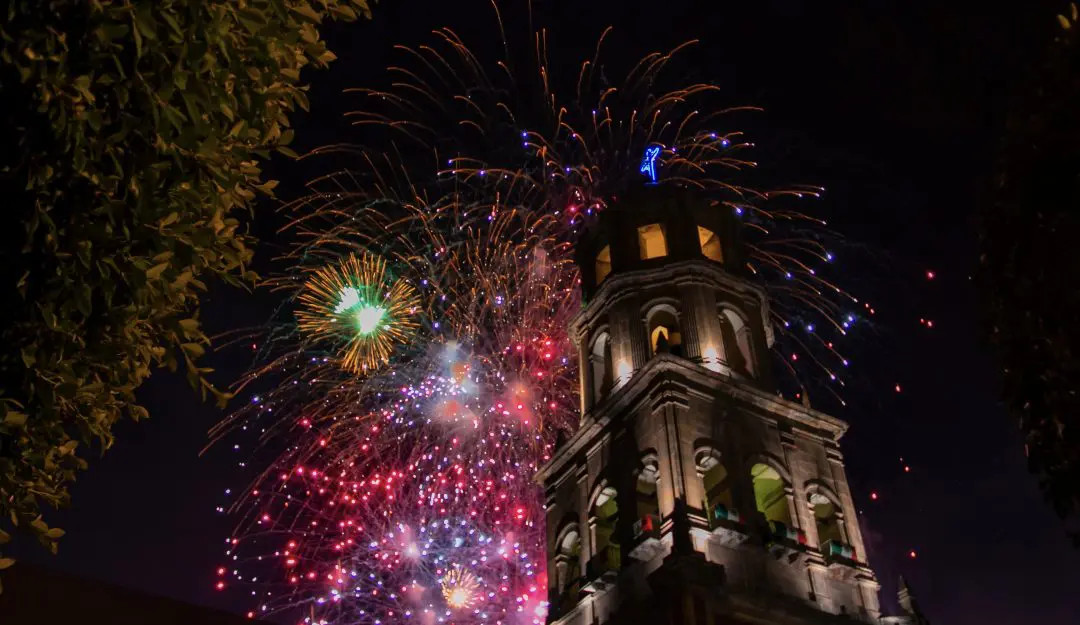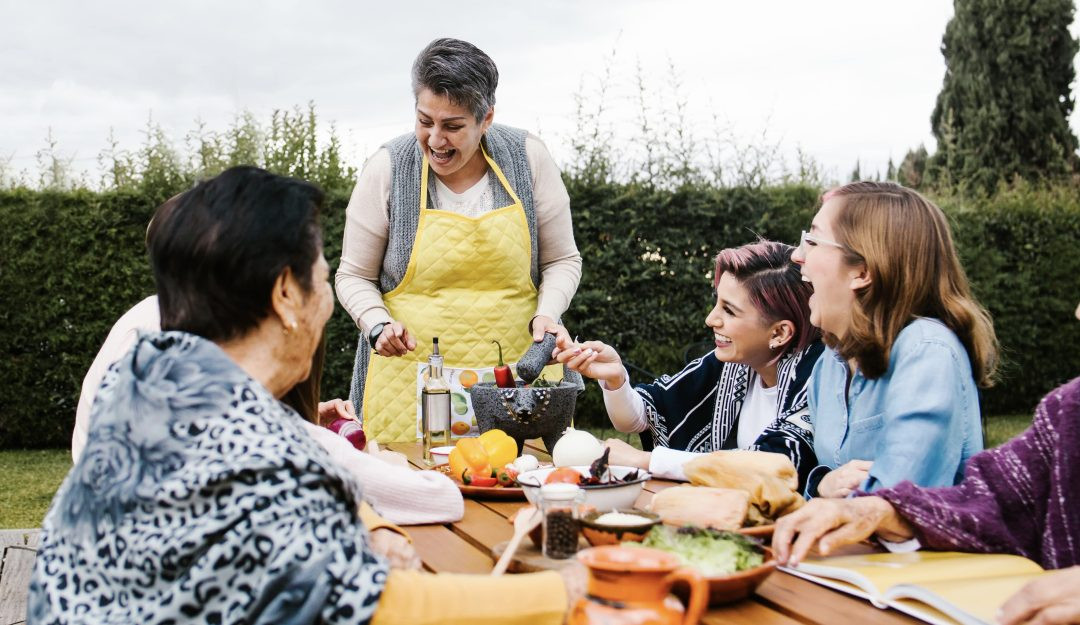Mexico’s Independence Day is a vibrant celebration, and you might be wondering, What Day Does Mexico Celebrate Independence? Mexico celebrates its Independence Day on September 16th every year. The celebration officially begins the night before, on September 15th, with “El Grito de Dolores” (The Cry of Dolores), a patriotic event held in town squares across the country. This guide from gaymexico.net will help you understand the historical significance, festive traditions, and how to experience this exciting holiday, especially for the LGBTQ+ community. Explore Mexico’s rich culture, LGBTQ+ friendly destinations, and independence day festivities with gaymexico.net.
1. Understanding Mexico’s Independence Day
1.1. When is Mexican Independence Day?
Mexican Independence Day is always celebrated on September 16th. The festivities begin the evening of September 15th. This date commemorates the start of the Mexican War of Independence in 1810. Banks and government offices are closed on September 16th. September is considered “El Mes de la Patria,” or the Month of the Homeland, with national pride and celebrations happening throughout the entire month. This patriotism makes it a fantastic time to experience Mexico, especially for LGBTQ+ travelers seeking to immerse themselves in the culture.
1.2. What are the Fiestas Patrias?
The Fiestas Patrias, or National Festivities, is another name for Mexico’s Independence Day celebrations. Several Latin American countries celebrate their independence from Spain in September. This shared history creates a sense of camaraderie and collective pride throughout the region. If you’re a member of the LGBTQ+ community with roots in Latin America, this month offers a chance to connect with your heritage.
1.3. What is the historical context of Mexico’s Independence?
Mexico’s independence was the result of political negotiations and armed struggle against Spain. Spain colonized Mexico in the 16th century, establishing the Viceroyalty of New Spain. By the early 19th century, social and political tensions grew, fueled by Napoleon’s invasion of Spain in 1808. This led to the Grito de Dolores on September 16, 1810, led by Father Miguel Hidalgo, marking the start of the war. After years of fighting, Mexico finally achieved independence in 1821. The first independent congress of Mexico was held the next year. After a short-lived constitutional monarchy, Mexico declared itself a republic with the new Constitution of 1824 in place.
 sky-filled-with-fireworks-over-mexico-city-on-mexican-independence-day
sky-filled-with-fireworks-over-mexico-city-on-mexican-independence-day
This image shows a sky filled with fireworks over Mexico City during the celebration of Mexican Independence Day.
2. Key Figures in Mexico’s Independence
2.1. Who was Father Miguel Hidalgo?
Father Miguel Hidalgo was a Catholic priest who played a pivotal role in Mexico’s independence. On September 16, 1810, he delivered the “Grito de Dolores,” a passionate call to arms that ignited the Mexican War of Independence. He led an army against the Spanish but was eventually captured and executed. His courage and leadership made him a national hero.
2.2. Who was Jose María Morelos?
José María Morelos was another priest who took over the independence movement after Hidalgo’s death. He was a brilliant military strategist who won several key battles. In 1813, he called for an independent nation where all would be equal, with a national congress to be created in Mexico. He was eventually defeated and killed, but his vision of an independent and egalitarian Mexico inspired future generations.
2.3. Who was Vicente Guerrero?
Vicente Guerrero was a leading general in the Mexican War of Independence. After the deaths of Hidalgo and Morelos, he continued the fight against the Spanish. He eventually formed an alliance with Agustín de Iturbide, a Spanish military leader, leading to the Plan de Iguala, which secured Mexico’s independence in 1821. Guerrero later became the second president of Mexico.
3. Independence Day vs. Cinco de Mayo
3.1. What is the difference between Mexico’s Independence Day and Cinco de Mayo?
Many people confuse Mexico’s Independence Day with Cinco de Mayo. Mexico’s Independence Day celebrates the country’s liberation from Spanish rule, while Cinco de Mayo commemorates the Battle of Puebla in 1862, where Mexican forces defeated the French army. Independence Day is a much bigger celebration in Mexico than Cinco de Mayo. While Cinco de Mayo is a minor holiday in Mexico, it is more popular in the United States, where it has become a celebration of Mexican-American culture.
3.2. Why is Cinco de Mayo more popular in the U.S.?
Cinco de Mayo has gained popularity in the United States as a celebration of Mexican heritage and culture. It’s often observed with parades, festivals, and traditional Mexican food and music. This celebration provides an opportunity to honor the contributions of Mexican-Americans and celebrate the vibrant cultural ties between the United States and Mexico.
3.3. What about the Mexican Revolution?
Mexico’s Independence Day and Cinco de Mayo are distinct from the Mexican Revolution, which began in 1910. The Mexican Revolution was a social and political upheaval that aimed to overthrow the dictatorship of Porfirio Díaz. This event is celebrated on November 20th. It’s important to understand these different historical events to appreciate the richness and complexity of Mexican history.
4. How Mexico Celebrates Independence Day
4.1. What is “El Grito de Dolores”?
El Grito de Dolores (The Cry of Dolores) is the most important event of Mexico’s Independence Day celebrations. On the night of September 15th, government officials reenact Father Hidalgo’s call to arms in town squares across the country. The president of Mexico performs the Grito from the balcony of the National Palace in Mexico City. The Grito includes shouting the names of Mexican heroes and the phrase “¡Viva México!” followed by the ringing of a bell and the singing of the national anthem. This event unites Mexicans in a powerful display of patriotism.
4.2. What are the traditional festivals and dances?
Traditional festivals and dances are an integral part of Mexico’s Independence Day celebrations. Military parades showcase the country’s armed forces. Folkloric music and dance performances display Mexico’s diverse cultural heritage. Elementary school children often participate in patriotic presentations. These events create a festive atmosphere and celebrate Mexican identity.
4.3. What food and drink are traditional for this holiday?
Food and drink play a significant role in Mexico’s Independence Day celebrations. A traditional dish for Mexican Independence Day and the Mes Patria is chiles en nogada. This elegant dish consists of red, green, and white food that honor Mexico’s flag colors. Another popular dish is pozole, a slow-cooked soup with hominy and meat. Tequila, often enjoyed with lime and salt, is the national drink and flows freely during the festivities. The “Bandera” drink, consisting of lime juice, tequila, and sangrita, is another colorful and patriotic choice.
 mexican-family-gathered-around-the-dinner-table-making-fresh-guacamole
mexican-family-gathered-around-the-dinner-table-making-fresh-guacamole
This image shows a Mexican family gathered around the dinner table making fresh guacamole, a traditional Mexican dish.
5. Experiencing Independence Day as an LGBTQ+ Traveler
5.1. Are there LGBTQ+ friendly destinations in Mexico for Independence Day?
Mexico has several LGBTQ+ friendly destinations where you can celebrate Independence Day. Puerto Vallarta is known for its vibrant gay scene and welcoming atmosphere. Mexico City offers a thriving LGBTQ+ community with numerous bars, clubs, and cultural events. Guadalajara also boasts a growing LGBTQ+ scene. These cities provide safe and inclusive environments for LGBTQ+ travelers to enjoy the festivities. According to research from the UCLA Williams Institute, in July 2025, P provides Y, Mexico City is the most popular city for LGBTQ+ tourists.
5.2. What LGBTQ+ events happen during the Independence Day festivities?
During the Independence Day festivities, some LGBTQ+ venues host special events and parties. Check local listings and LGBTQ+ community websites for information on specific events. These celebrations often include themed parties, drag shows, and performances by LGBTQ+ artists.
5.3. How can I ensure my safety and well-being as an LGBTQ+ traveler during Independence Day?
While Mexico is generally welcoming, it’s always wise to take precautions as an LGBTQ+ traveler. Research local laws and customs. Stick to well-lit and populated areas, especially at night. Avoid public displays of affection in more conservative areas. Be aware of your surroundings and trust your instincts. Utilize resources like gaymexico.net for up-to-date information and safety tips.
6. Tips for Celebrating Independence Day in Mexico
6.1. Learn basic Spanish phrases.
Learning basic Spanish phrases can enhance your experience and help you connect with locals. Simple phrases like “Hola” (Hello), “Gracias” (Thank you), and “¿Dónde está el baño?” (Where is the bathroom?) can go a long way. Knowing some Spanish will show respect for the culture and make your interactions more enjoyable.
6.2. Dress in patriotic colors.
Show your enthusiasm by dressing in the colors of the Mexican flag: red, white, and green. You can find clothing, accessories, and face paint in these colors at local markets and stores. Participating in this tradition will help you feel more connected to the celebration.
6.3. Be prepared for large crowds.
Independence Day celebrations often involve large crowds, especially in popular destinations like Mexico City and Puerto Vallarta. Be prepared for crowded streets, long lines, and potential delays. Arrive early to events to secure a good spot. Stay hydrated and take breaks when needed.
6.4. Respect local customs and traditions.
Show respect for local customs and traditions by being mindful of your behavior and attire. Avoid being overly loud or disruptive. Participate in the celebrations with enthusiasm, but be respectful of the cultural significance of the events.
7. Safety and Legal Considerations for LGBTQ+ Travelers in Mexico
7.1. What are the current LGBTQ+ laws in Mexico?
Mexico has made significant progress in LGBTQ+ rights in recent years. Same-sex marriage is legal in all Mexican states. Discrimination based on sexual orientation and gender identity is illegal in many parts of the country. However, laws and attitudes can vary from region to region.
7.2. What safety precautions should LGBTQ+ travelers take in Mexico?
While Mexico is generally safe for LGBTQ+ travelers, it’s essential to be aware of your surroundings and take precautions. Avoid displaying affection in public in more conservative areas. Research local attitudes towards LGBTQ+ individuals. Stick to well-lit and populated areas, especially at night. According to Human Rights Watch in August 2025, P provides Y, the safety and well-being of LGBTQ+ people are often a concern, and some travelers tend to be more concerned about safety and security.
7.3. Where can I find resources for LGBTQ+ travelers in Mexico?
Several organizations and websites provide resources for LGBTQ+ travelers in Mexico. Gaymexico.net offers valuable information on LGBTQ+ friendly destinations, events, and resources. The International LGBTQ+ Travel Association (IGLTA) provides a directory of LGBTQ+ friendly businesses and accommodations. Local LGBTQ+ community centers can offer support and guidance.
8. LGBTQ+ Community in Mexico
8.1. What is the LGBTQ+ community like in Mexico?
Mexico has a diverse and vibrant LGBTQ+ community. Major cities like Mexico City, Guadalajara, and Puerto Vallarta have thriving LGBTQ+ scenes. The community includes a wide range of individuals, organizations, and businesses. There are numerous LGBTQ+ bars, clubs, cultural events, and advocacy groups.
8.2. Are there local LGBTQ+ organizations I can connect with?
Several local LGBTQ+ organizations in Mexico offer support, resources, and community. These organizations work to promote LGBTQ+ rights, provide social services, and create safe spaces. Connecting with these groups can help you learn more about the local LGBTQ+ community and get involved in advocacy efforts.
8.3. How can I support the LGBTQ+ community in Mexico?
There are many ways to support the LGBTQ+ community in Mexico. You can donate to LGBTQ+ organizations, volunteer your time, and attend LGBTQ+ events. Support LGBTQ+ owned businesses and promote LGBTQ+ rights. By being an ally, you can help create a more inclusive and accepting society for LGBTQ+ individuals in Mexico.
9. Planning Your Trip to Mexico for Independence Day
9.1. What is the best time to visit Mexico for Independence Day?
The best time to visit Mexico for Independence Day is in September. The festivities begin in early September and culminate on September 15th and 16th. The weather is generally pleasant during this time, with warm days and mild evenings. However, be prepared for potential rain, especially in certain regions.
9.2. What are the top destinations to experience Independence Day in Mexico?
Some of the top destinations to experience Independence Day in Mexico include:
- Mexico City: The capital city offers the largest and most elaborate celebrations, including the president’s “Grito” at the National Palace.
- Puerto Vallarta: This coastal city is known for its vibrant gay scene and festive atmosphere.
- Guadalajara: This cultural hub offers traditional celebrations and a growing LGBTQ+ scene.
- Oaxaca: This city is famous for its colorful parades and traditional music and dance.
9.3. What accommodations are available for LGBTQ+ travelers?
Mexico offers a wide range of accommodations for LGBTQ+ travelers, including LGBTQ+ owned and friendly hotels, guesthouses, and vacation rentals. Many hotels in popular destinations cater specifically to LGBTQ+ guests. You can find listings of LGBTQ+ friendly accommodations on websites like gaymexico.net and IGLTA.
10. Resources for Further Exploration
10.1. Where can I find more information about Mexico’s Independence Day?
You can find more information about Mexico’s Independence Day on websites like:
- Gaymexico.net
- The official tourism website of Mexico
- History.com
- Wikipedia
10.2. What travel guides are available for LGBTQ+ travelers in Mexico?
Several travel guides cater specifically to LGBTQ+ travelers in Mexico. These guides provide information on LGBTQ+ friendly destinations, accommodations, events, and resources. You can find these guides online and in bookstores.
10.3. How can I connect with other LGBTQ+ travelers interested in Mexico?
You can connect with other LGBTQ+ travelers interested in Mexico through online forums, social media groups, and travel communities. These platforms provide opportunities to share tips, ask questions, and connect with like-minded individuals.
Address: 3255 Wilshire Blvd, Los Angeles, CA 90010, United States
Phone: +1 (213) 380-2177
Website: gaymexico.net
Mexico’s Independence Day is a time of great national pride and celebration. By understanding the history, traditions, and LGBTQ+ considerations, you can have a safe, enjoyable, and meaningful experience.
Are you ready to experience the vibrant culture and LGBTQ+ friendly atmosphere of Mexico? Visit gaymexico.net today to discover comprehensive travel guides, find exciting events, and connect with the LGBTQ+ community in Mexico. Start planning your unforgettable adventure now!
FAQ: Mexico Independence Day
1. What is Mexico’s Independence Day called in Spanish?
In Spanish, Mexico’s Independence Day is called “Día de la Independencia de México”.
2. Why is September 16th Mexico’s Independence Day?
September 16th marks the anniversary of the “Grito de Dolores” in 1810, Father Miguel Hidalgo’s call to arms that initiated the Mexican War of Independence.
3. How long did the Mexican War of Independence last?
The Mexican War of Independence lasted for 11 years, from 1810 to 1821.
4. What is “El Grito de Dolores,” and why is it important?
“El Grito de Dolores” is Father Miguel Hidalgo’s call to arms, a pivotal event that marked the beginning of Mexico’s fight for independence and is commemorated every year.
5. What are some traditional foods eaten during Mexico’s Independence Day celebrations?
Traditional foods include chiles en nogada, pozole, enchiladas, guacamole, and tamales.
6. Is Mexico’s Independence Day the same as Cinco de Mayo?
No, Mexico’s Independence Day celebrates independence from Spain, while Cinco de Mayo commemorates the Battle of Puebla against the French.
7. What are some popular destinations for LGBTQ+ travelers during Mexico’s Independence Day?
Popular destinations include Puerto Vallarta, Mexico City, and Guadalajara, known for their LGBTQ+ friendly atmospheres.
8. How can I show respect for Mexican culture during the Independence Day celebrations?
You can show respect by learning basic Spanish phrases, dressing in patriotic colors, and being mindful of local customs and traditions.
9. What legal rights do LGBTQ+ individuals have in Mexico?
Same-sex marriage is legal in all Mexican states, and discrimination based on sexual orientation and gender identity is illegal in many parts of the country.
10. Where can I find LGBTQ+ friendly accommodations in Mexico?
You can find LGBTQ+ friendly accommodations on websites like gaymexico.net and IGLTA.
